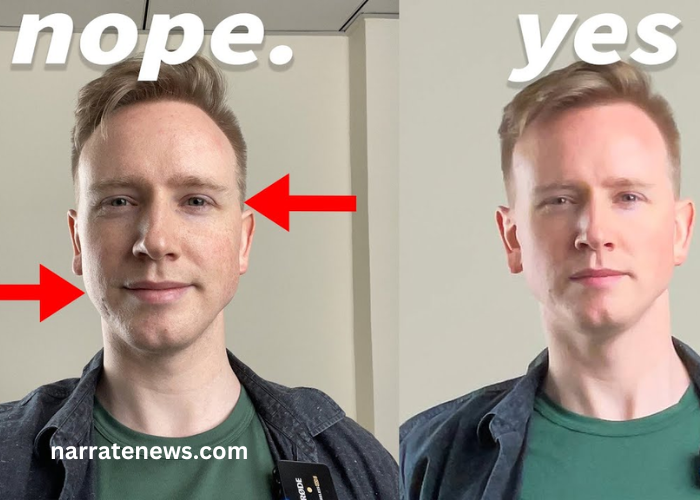
How to take a good selfie
In today’s digital age, taking a good selfie has become an essential skill for many people. Whether it’s for sharing on social media, capturing a memorable moment, or simply feeling good about yourself, knowing how to take a flattering and engaging selfie can make a significant difference. However, mastering the art of the selfie involves more than just pointing and clicking. It requires an understanding of lighting, angles, composition, and a few tricks of the trade. In this article, we’ll explore some tips and techniques to help you capture that perfect selfie every time.
Find the Right Lighting
The most crucial element in taking a good selfie is lighting. Natural light is generally the most flattering, so try to position yourself facing a window or go outdoors during the day. Avoid harsh overhead lights or direct sunlight, as they can cast unflattering shadows on your face. Soft, diffused light is ideal for minimizing imperfections and highlighting your features.
Experiment with different lighting setups to see what works best for you. If you’re indoors, standing near a window or using soft artificial lights like lamps can create a pleasant glow. Avoid using flash whenever possible, as it tends to wash out your complexion and create unflattering reflections.
Consider the Angle
The angle at which you hold your camera can dramatically affect how you look in a selfie. Holding the camera slightly above eye level is generally the most flattering angle for most people. It helps define your jawline and makes your eyes appear larger. Avoid holding the camera too low, as this can create unflattering shadows and emphasize certain features.
Experiment with different angles to find your best side. Tilting your head slightly or turning your body can also add variety and personality to your selfies. Don’t be afraid to take multiple shots from different angles and review them to see which ones you like best.
Mind the Background
A cluttered or distracting background can take the focus away from you in a selfie. Before taking your shot, take a moment to scan your surroundings and choose a clean, simple backdrop. A plain wall, a scenic landscape, or an interesting architectural feature can all make great backgrounds that complement rather than compete with your image.
Alternatively, you can use depth of field to your advantage by blurring the background slightly. This can be achieved by using the portrait mode on many smartphones or by physically creating distance between yourself and the background.
Smile Naturally
Your smile can make or break a selfie. Aim for a natural, relaxed smile that reaches your eyes. Practice different smiles in front of a mirror to find the one that looks best on camera. If you’re not a fan of smiling, a subtle smirk or a relaxed expression can also work wonders.
Avoid forcing a smile, as it can appear insincere or awkward. Think of something that genuinely makes you happy before taking the picture to help evoke a natural smile.
Use the Rule of Thirds
The rule of thirds is a basic principle of photography that can be applied to selfies as well. Imagine dividing your frame into a grid of nine equal sections (like a tic-tac-toe board). Position yourself slightly off-center, either to the left or right, rather than placing yourself directly in the middle. This creates a more dynamic and visually appealing composition.
Experiment with different placements within the frame to see what works best for your face shape and features. You can also use this technique to include interesting elements in the background while keeping the focus on yourself.
Use Selfie Accessories
There’s a myriad of accessories designed specifically to enhance your selfie game. From selfie sticks that allow you to capture a wider angle to remote shutter controls that eliminate the need for awkward arm extensions, these tools can be invaluable for taking professional-looking selfies.
Invest in a good quality selfie stick or tripod to stabilize your camera and expand your shooting options. Some smartphones even have built-in features like voice-activated shutter releases or gesture controls that make taking selfies easier and more fun.
Edit Wisely
While it’s tempting to apply filters and edits to enhance your selfies, it’s essential to use editing tools wisely. Overly filtered or heavily edited selfies can appear unnatural and detract from your true appearance. Instead, focus on subtle enhancements like adjusting brightness, contrast, and sharpness to refine your image without altering it beyond recognition.
Experiment with different editing apps to find one that suits your style and skill level. Remember, the goal is to enhance your natural beauty, not create an entirely new persona.
Practice Makes Perfect
Like any skill, taking great selfies takes practice. Don’t get discouraged if your first attempts don’t turn out as expected. Experiment with different techniques, settings, and poses to discover what works best for you. Review your selfies critically and learn from each experience to refine your skills over time.
Additionally, don’t be afraid to seek inspiration from others. Follow photographers and influencers whose selfies you admire and try to incorporate their techniques into your own style.
Conclusion
In conclusion, taking a good selfie is a blend of art and technique. By paying attention to lighting, angles, composition, and expression, you can capture flattering and engaging selfies that reflect your best self. Remember to keep it fun and authentic, and don’t be afraid to experiment until you find your signature selfie style. With a little practice and creativity, you’ll be snapping Insta-worthy selfies like a pro in no time.


